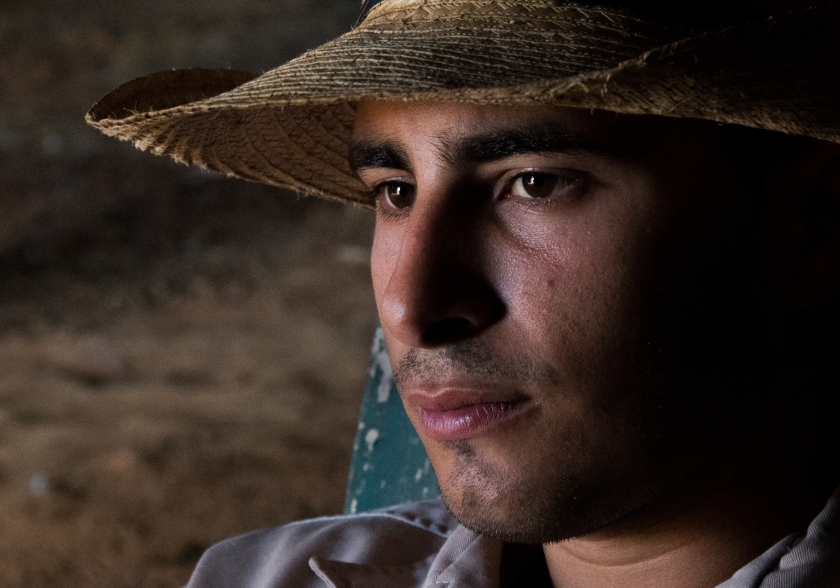
The iconic status of Cigars motivated me to visit the tobacco farm of the Cameo family. Sergio was a wonderful host. I was amazed at the young man’s maturity. Generous with his time, he shared his knowledge & a few laughs…but no family secrets. Inside a drying houses the reflected morning sun fueled my attempts to capture some interesting images. This portrait is one of my top 3 favorite shots from my trip.
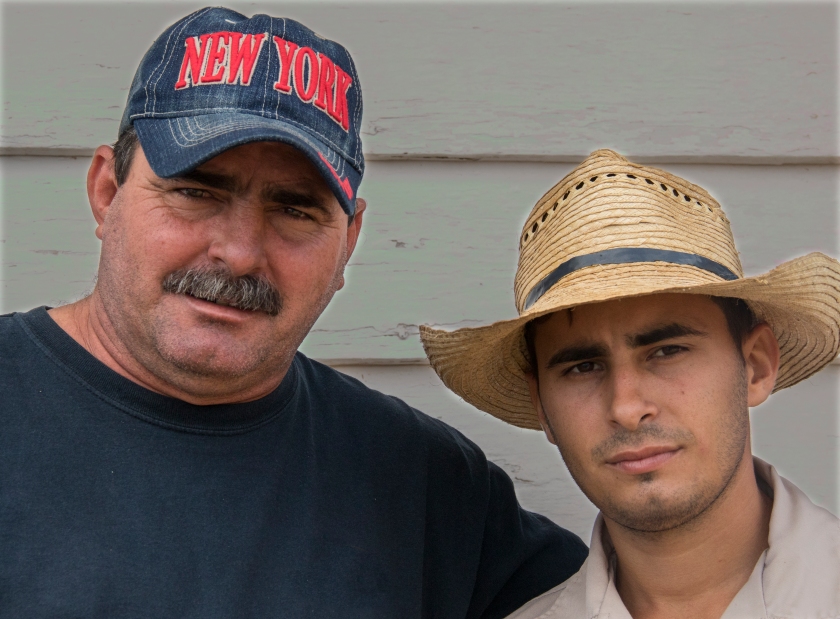
Respecting & honoring family are subjects I experienced with other Cubans I came in contact with. While Sergio was giving a tour of his home I wasn’t surprised to hear praise for his father but also respect for his grandparents. He proudly told me about his ancestors that had emigrated from Spain in the mid 1800’s. His family has farmed the land the entire time. This father & son portrait has an interesting generational flip-flop. Benito has on the ball cap & his son wears the traditional headgear.
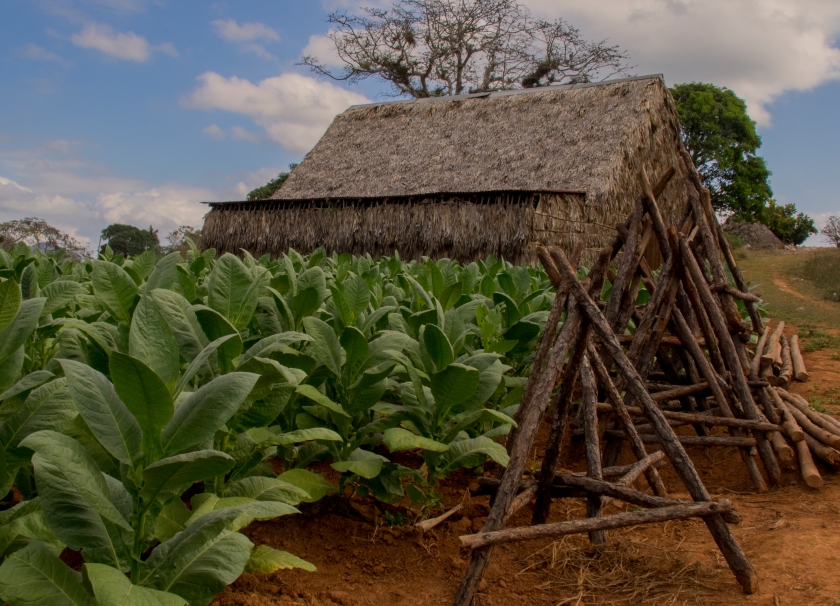
I was struck at the size, strength & vibrant color of the tobacco plants. They are cultivated from a seed the size of a pinhead. I learned the first leaves are cut for cigars. The second sets of leaves are for cigarettes. After tobacco leaves are harvested they begin a lengthy process before being rolled into cigars. Some leaves can be aged for 5 years.
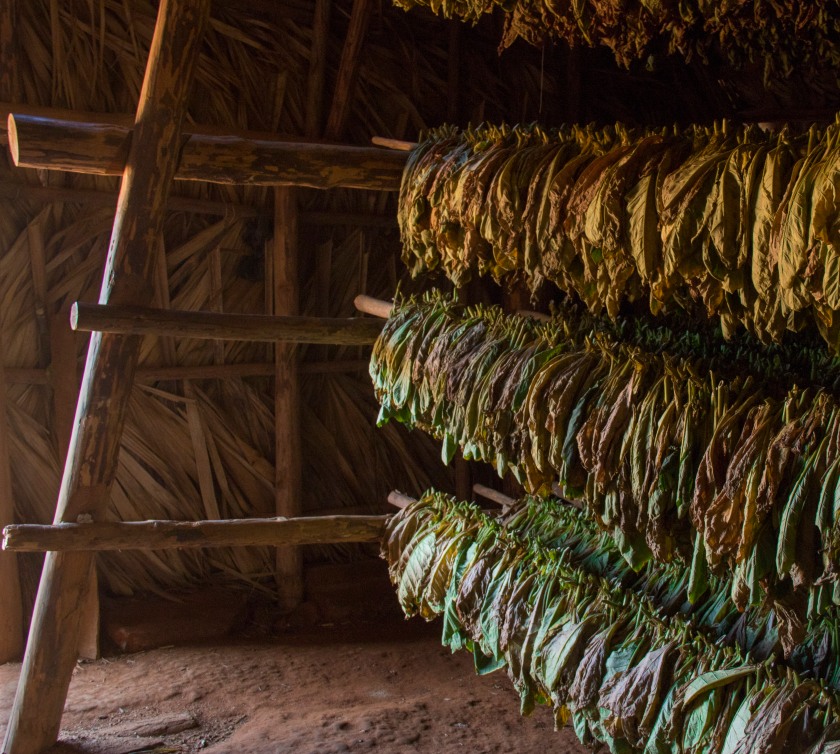
First there is the curing where the leaves turn from green to yellow to orange & finally brown. The next steps are aging & fermentation. I was told different blends of spices, honey & rum are common seasonings. I began to understand the correlation cigars have with wine & craft beer. Recipes, aging & timing all are critical to the final product. Like cuttings from vineyards other farmers value the seeds of tobacco plants. The process is a blend of science, generational expertise & mother natures.
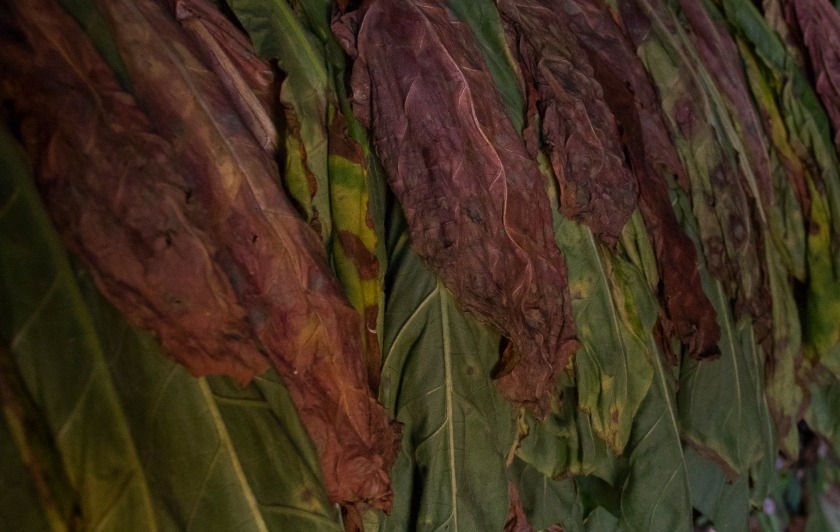
In hindsight, I’d have been smart to grab the tripod from the trunk. The sunlight coming thru the door bouncing off of the reddish dirt gave a wonderful quality to the light. Mixed with the aroma of drying tobacco the radiance of the room seemed to have a taste to it. The textures on the leaves was both subtle & dramatic. The limited spectrum of colors was a rich blend of earth tones. My eyes saw things I couldn’t capture with the camera. If I go back, I will have my tripod & do low ISO/f 16/long exposures. Speaking of equipment, the most manageable package of gear was the 7D/18-135 & an OTS bag with 28, 40 & 100mm lenses. The 400mm stayed in my room. The 2nd camera around my neck was of little value. Twice I wished I had my 10-22mm I left in Pittsburgh.
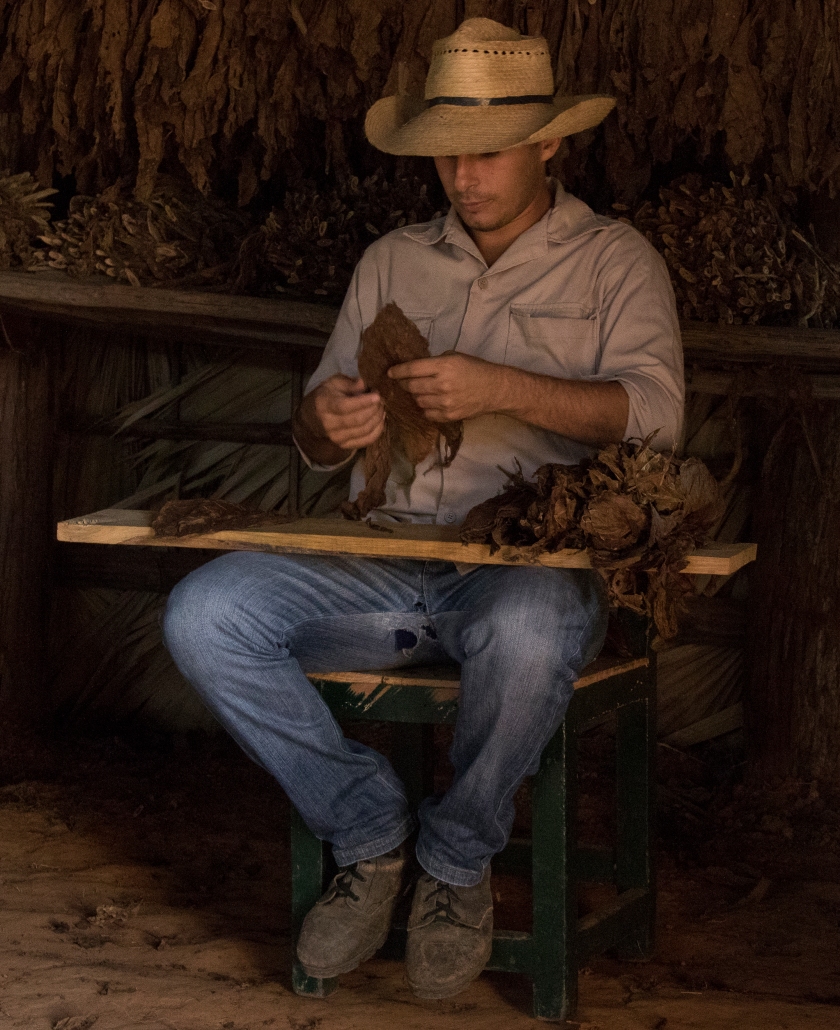
Part of Sergio’s plans for the future is to continue to learn from his father. He understands the importance of his family’s reputation & recognizes he must gain more experience & work hard. The Camejo name has been respected as farmers in the Valley for over a century & a half. The leaves from their farm are recognized for consistent high quality. Rolled cigars are a significant export in the Cuban economy. The government purchases 90% of the leaves at a price set by the government. Sergio believes the possibility of changing relations with the US means more people will be interested in Cuban Tobacco making the future bright for his family’s farm.
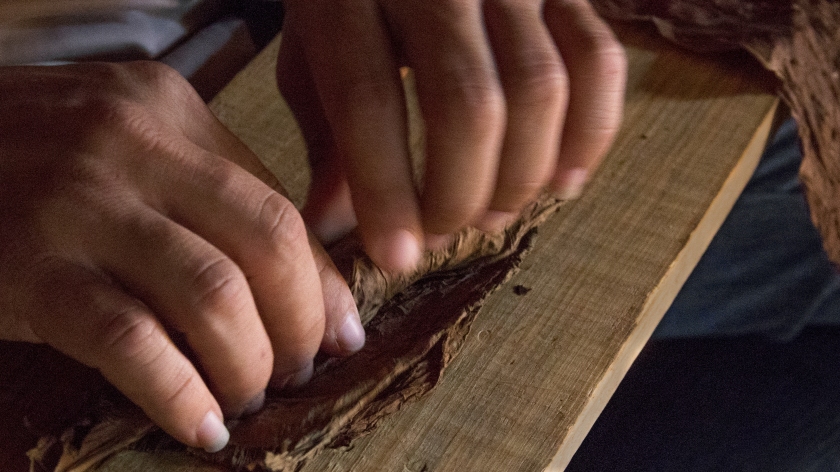
The quality of the final cigar begins with using his fingers to judge the dryness of each leaf. The tools he needed were basic. He had a board across his lap & a machete on his belt, to trim the ends. Once he rolls specific leafs into the layers of the cigar it is wrapped tight using a large unblemished leaf. He then smells the final product, examines the overall rolling before he lights it & tastes it. He also inspects the ash. Four of his 5 senses are used to ensure the high standard his product is recognized for. Consistency & quality go hand in hand in the world of cigars.
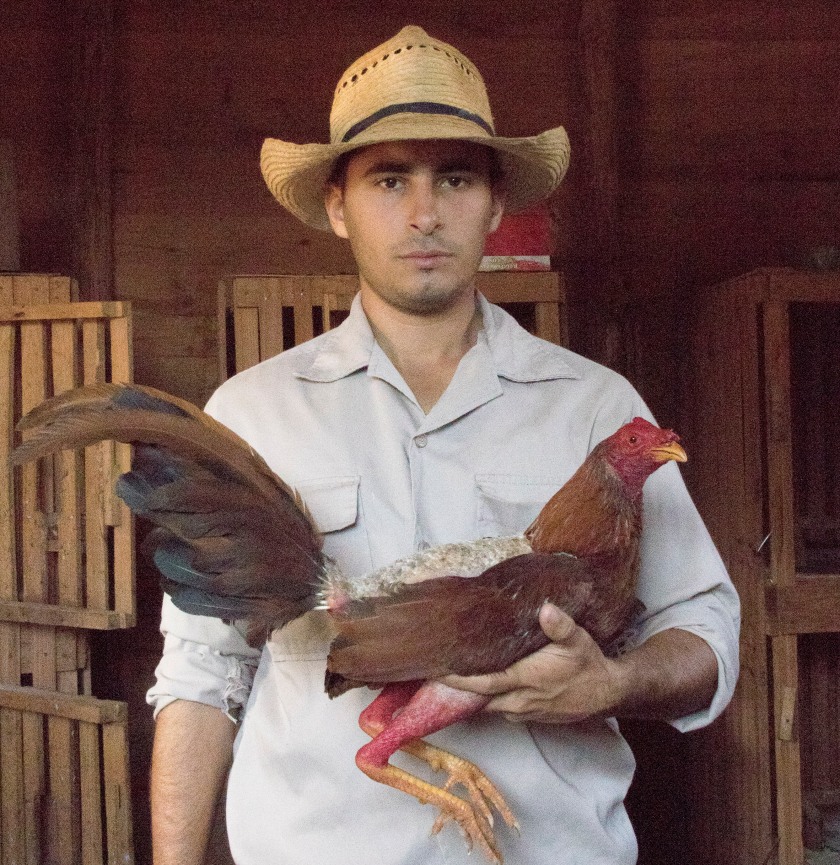
Cockfighting is legal in Cuba but betting, like most gambling, was shut down by after the 1959 Revolution. Although Sergio is only 20 years old his confident poise is evident as he proudly displays his champion fighting rooster. Before we took this picture he took the time to groom/massage his champion. He explained the entire training, diet, conditioning & recovery process. It was a bit like the routine of boxers. As I was listening & taking photos I had my only Hemingway Moment while I was in Cuba.
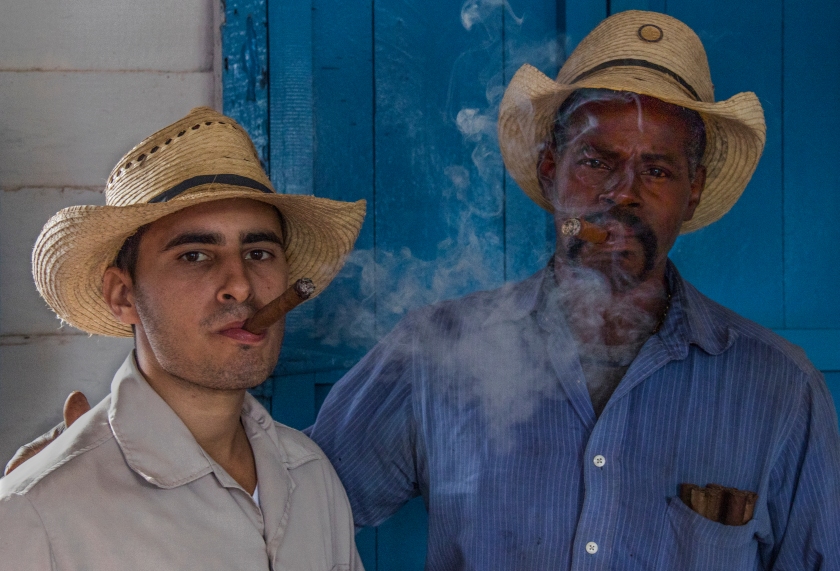
The concept of family extends to all that work alongside each other. Workers on the farm bridge the history of families with the Camejo’s which not only is a sign of loyalty but also respect & honesty. I’ve always had high regard for farmers. Working close to the land is tough, dirty, honest work. I learned a lot about cigars & discovered coffee with rum is Patriota & rum with coffee Carajillo. Details can be important. It was a beautiful morning on the farm.
The content of these postings are based upon my observations, conversations with my guide, interviews with people interpreted by my guide & interactions I had with people I met. Any mistakes are entirely mine with no intention to mislead.